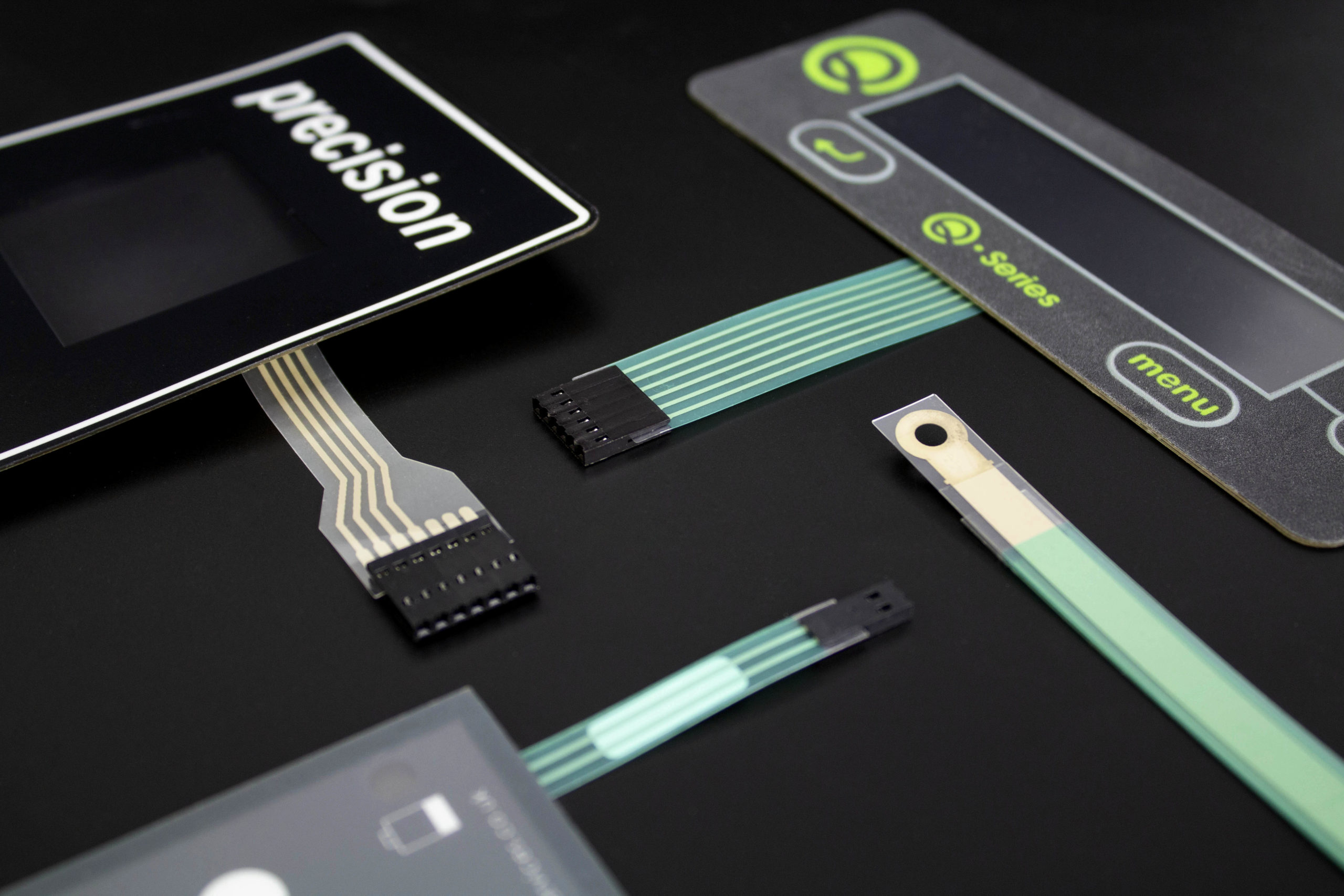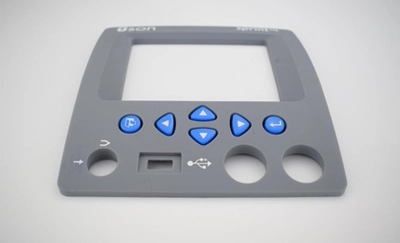Understanding the Value of Membrane Layer Switch Over in Modern Electronics
Membrane buttons are essential elements in contemporary electronic tools. They supply a blend of performance and style that boosts customer interaction. Their long lasting and light-weight nature makes them appropriate for numerous applications. As industries progress, the demand for modification and progressed functions expands. Comprehending how membrane layer changes add to innovation reveals their relevance in forming the future of electronics. What exists ahead for this modern technology?
The Essentials of Membrane Switch Modern Technology
Although usually forgotten, membrane layer switch modern technology plays a crucial duty in the modern electronic devices landscape - membrane switch. These gadgets, composed of numerous layers, function as interface for numerous electronic products, ranging from family home appliances to clinical tools. A regular membrane layer button consists of a visuals overlay, a spacer layer, and a circuit layer, which are carefully set up to develop a practical interface.When stress is related to the overlay, the circuit layer is completed, enabling signals to be sent to the tool. This innovation is recognized for its flexibility, making it possible for personalization in form, capability, and style to fulfill particular individual needs. In addition, membrane layer buttons are lightweight and slim, making them appropriate for applications where room is a costs. Their longevity and resistance to ecological elements further enhance their charm, ensuring they can hold up against severe conditions while preserving functionality. On the whole, membrane switch modern technology is important to developing effective and straightforward electronic tools

Key Benefits of Membrane Layer Changes
Membrane switches offer a number of vital advantages that make them a favored selection in different electronic applications. Their design permits a portable form element, making it possible for producers to produce light-weight and streamlined gadgets. Furthermore, membrane layer switches are resistant to dirt, wetness, and chemicals, which boosts their longevity and longevity popular settings. The responsive feedback given by these switches can boost individual experience, making them very easy and intuitive to operate.Furthermore, membrane layer buttons can be personalized with varied graphics and shades, enabling distinct branding opportunities. The production procedure is typically cost-effective, especially for high-volume production, as it decreases setting up time and streamlines style. Ultimately, membrane switches over need marginal maintenance, adding to reduced total functional costs. These benefits underscore their growing appeal in modern-day electronics, where integrity and user-friendly interfaces are important.

Applications Throughout Different Industries
The versatility of membrane layer changes allows their widespread fostering throughout numerous sectors. In the clinical area, they are generally made use of in diagnostic equipment and patient tracking systems, using a durable user interface immune to impurities. The automotive industry uses membrane switches for dashboard controls, improving user experience with streamlined designs that withstand extreme problems. In customer electronics, they function as control board for devices such as microwaves and coffee makers, giving a straightforward user interface that is simple to tidy. The aerospace industry employs membrane layer switches in cabin controls, where dependability and space performance are extremely important. Additionally, the commercial market leverages these buttons in machinery and control systems to guarantee robust operation popular atmospheres. This wide series of applications underscores the adaptability of membrane layer buttons, making them essential elements in enhancing functionality and user interaction across varied technical landscapes.
Personalization and Style Adaptability

Future Fads in Membrane Layer Change Advancement
Emerging fads in membrane button growth suggest an expanding emphasis on boosted performance and assimilation with wise innovations. As consumer demand for much more sophisticated digital devices increases, suppliers are concentrating on developing membrane switches that not only offer fundamental operational functions yet additionally include features like touch level of sensitivity, backlighting, and haptic feedback.Furthermore, developments in products are anticipated to boost sturdiness and ecological resistance, making membrane switches suitable for diverse applications in markets such as healthcare, auto, and customer electronics. The integration of capacitive touch innovation is most likely to come to be more common, permitting sleeker layouts and boosted user interfaces. membrane switch.Additionally, the surge of the Web of Things (IoT) is prompting the advancement of membrane switches that can communicate wirelessly with other gadgets, enhancing interconnectivity. Generally, the future of membrane layer button technology shows up appealing, driven by advancement and the pursuit of easy to use solutions
Regularly Asked Inquiries
Exactly How Do Membrane Layer Switches Over Compare to Conventional Mechanical Switches?
Membrane switches, being much more space-efficient and offering a streamlined design, contrast with conventional mechanical switches that supply responsive comments. The previous usually include customizable graphics, while the latter commonly assure resilience and dependability in numerous applications.
What Products Are Commonly Made Use Of in Membrane Switch Production?
Membrane layer buttons are commonly generated using products such as polyester, polycarbonate, and published useful source conductive inks. These materials give responsiveness, flexibility, and resilience, making them ideal for various applications in digital tools and interface.
Can Membrane Switches Be Repaired or Recycled?
Membrane layer switches can often be fixed, particularly if small concerns arise, such as adhesive failing or surface damages. Complete reuse is generally restricted due to use and possible degradation of materials over time.
Just How Do Ecological Aspects Impact Membrane Layer Change Performance?
Environmental factors, such as temperature level, direct exposure, and humidity to chemicals, significantly affect membrane layer button performance. Extreme conditions can bring about degradation, affecting responsiveness and longevity, inevitably endangering the performance of the device in numerous applications.
What Is the Regular Lifespan of a Membrane Switch over?
The regular life-span of a membrane layer switch normally varies from 1 to 5 million actuations, depending on factors such as use regularity, ecological problems, and the products made use of in production, impacting durability and efficiency longevity. A typical membrane layer button is composed of a graphic overlay, a spacer layer, and a circuit layer, which are thoroughly set up to create a functional interface - membrane switch.When pressure is used to the overlay, the circuit layer is finished, enabling signals to be transferred to the device. The tactile feedback provided by these switches can boost customer experience, making them simple and user-friendly to operate.Furthermore, membrane layer switches can be tailored with varied graphics and shades, enabling for special branding chances. As consumer need for extra advanced digital gadgets increases, manufacturers are focusing on producing membrane layer changes that not only offer fundamental operational functions but also incorporate attributes like touch level of sensitivity, backlighting, and haptic feedback.Furthermore, advancements in products are expected to enhance durability and ecological resistance, making membrane layer switches ideal for diverse applications in industries such as healthcare, automotive, and customer electronic devices. The combination of capacitive touch innovation is likely to become much more widespread, enabling for sleeker layouts and boosted individual interfaces.Additionally, the surge of the Internet of Things (IoT) is motivating the advancement of membrane layer switches that can interact wirelessly with other tools, boosting interconnectivity. Membrane layer switches, being a lot more space-efficient and supplying a sleek design, comparison with conventional mechanical switches that provide tactile comments